Intel Announces Cascade Lake: Up to 56 Cores and Optane Persistent Memory DIMMs
Optane DIMMs Have Bright Prospects
Intel also announced the long-awaited arrival of its new Optane DC Persistent Memory DIMMs. The new DIMMs slot into the DDR4 interface, just like a normal stick of RAM, but come in three capacities of 128, 256, and 512GB. That's a massive capacity increase compared to the industry-leading 128GB DDR4 memory sticks and enables a total of up to 6.5TB of Optane storage in a dual-socket server. Intel designed the DIMMs to bridge both the performance and pricing gap between storage and memory, and although Intel hasn't released pricing yet, the new DIMMs should land at much lower price points than typical DRAM.
The new modules use Intel's 3D XPoint memory and can be addressed as either memory or storage. Unlike DRAM, 3D XPoint retains data after power is removed, thus enabling radical new use cases. 3D XPoint is also fast enough to serve as a slower tier of DRAM, but it does require tuning the application and driver stacks to accommodate its unique characteristics.
Much like NAND, 3D XPoint has a finite lifespan, but Intel says that it warranties the modules for an unlimited amount of use over the five-year warranty period. Intel says that it bases this endurance rating on the maximum possible throughput possible to the DIMMs for the duration of the five-years, putting to rest any endurance concerns. Intel also encrypts all data stored on the DIMMs to protect user data.



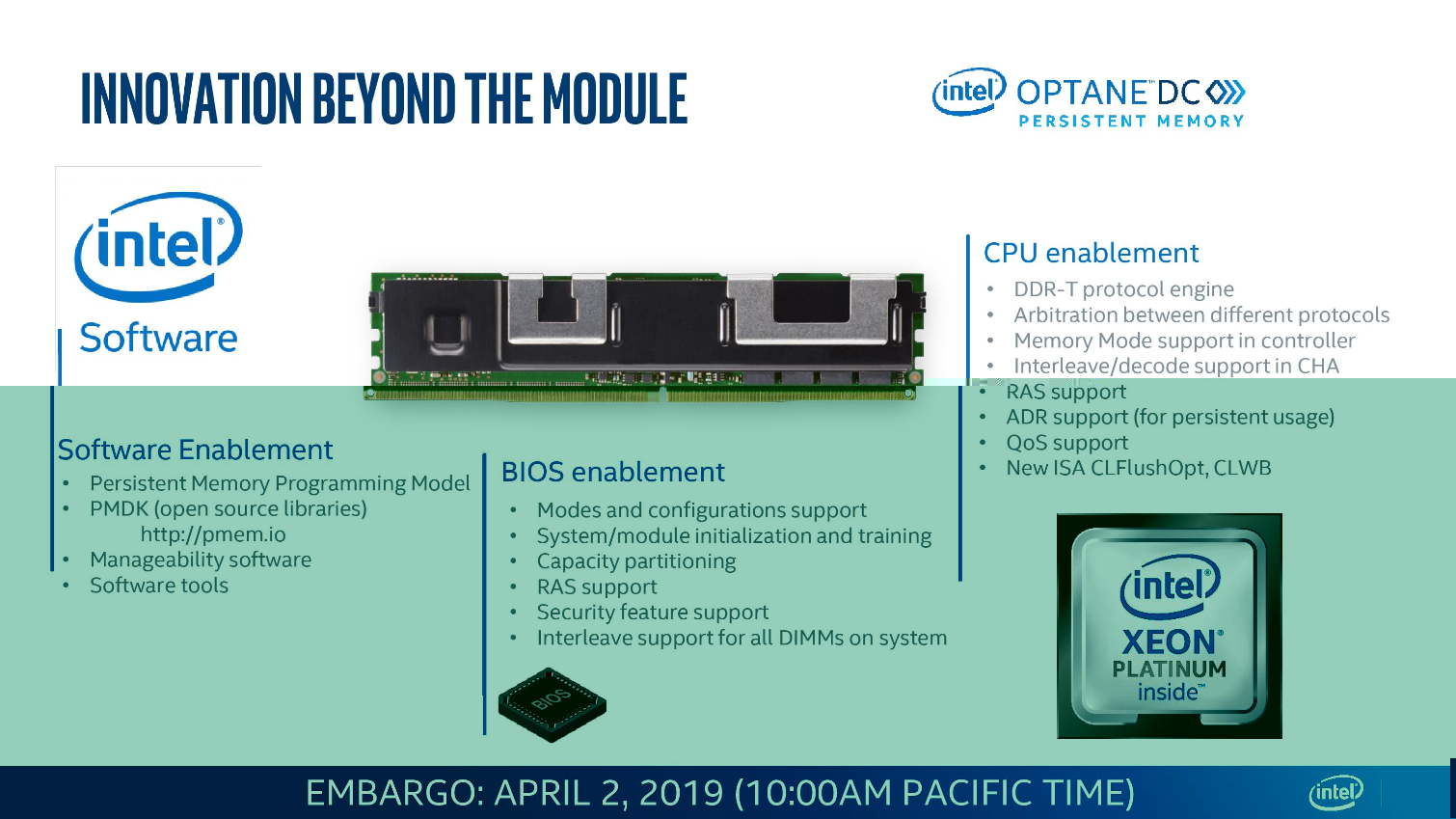








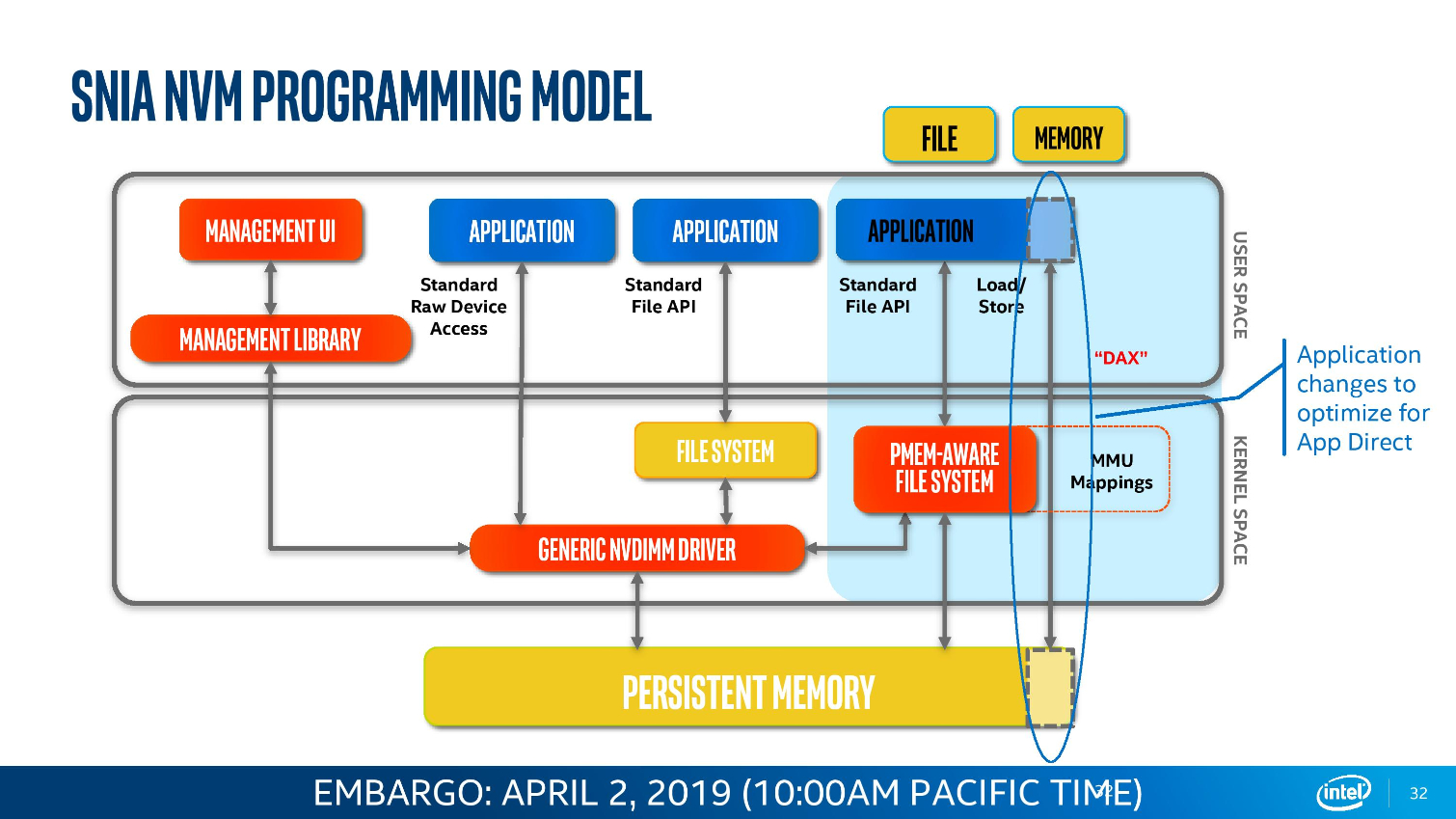



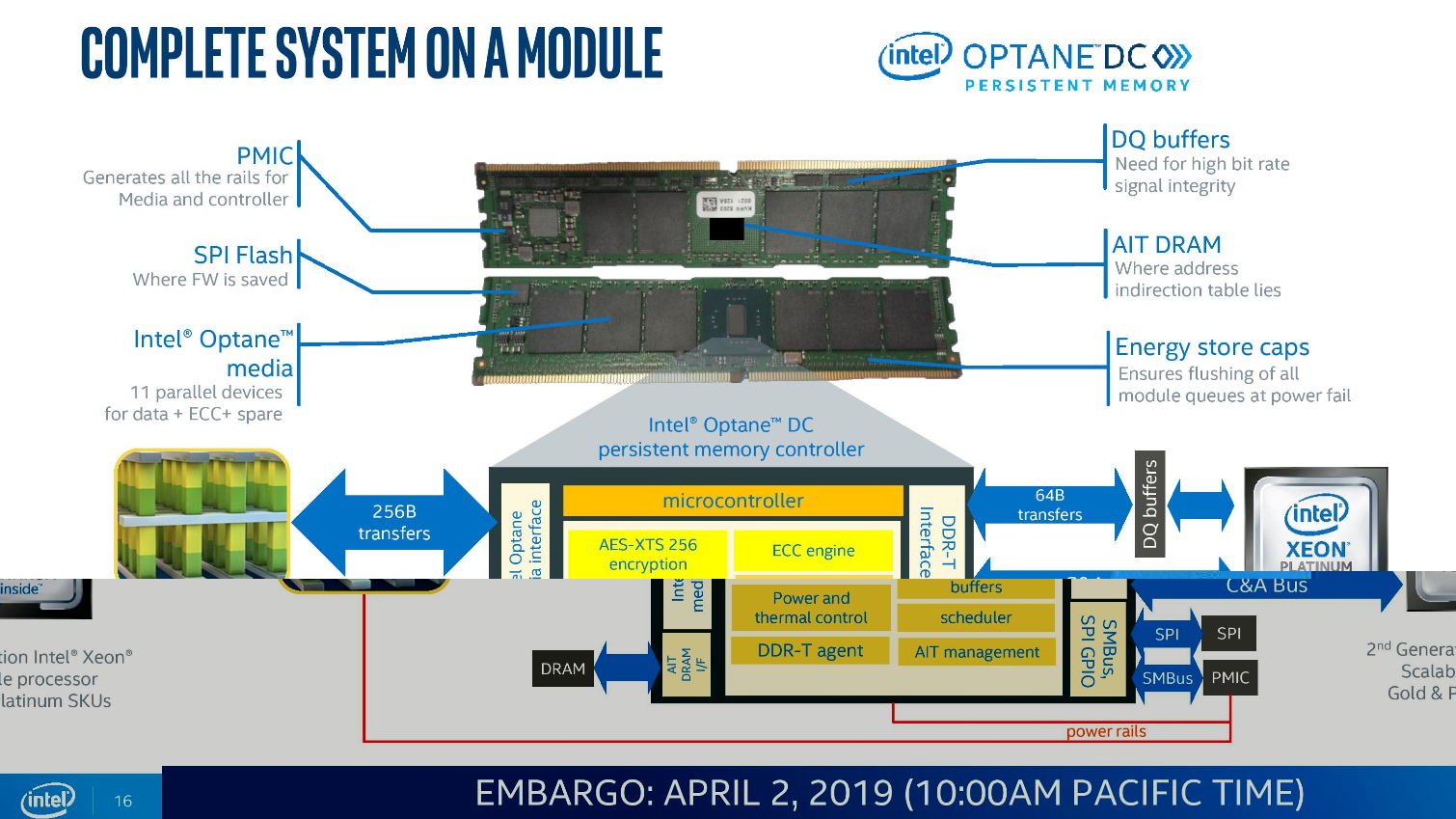





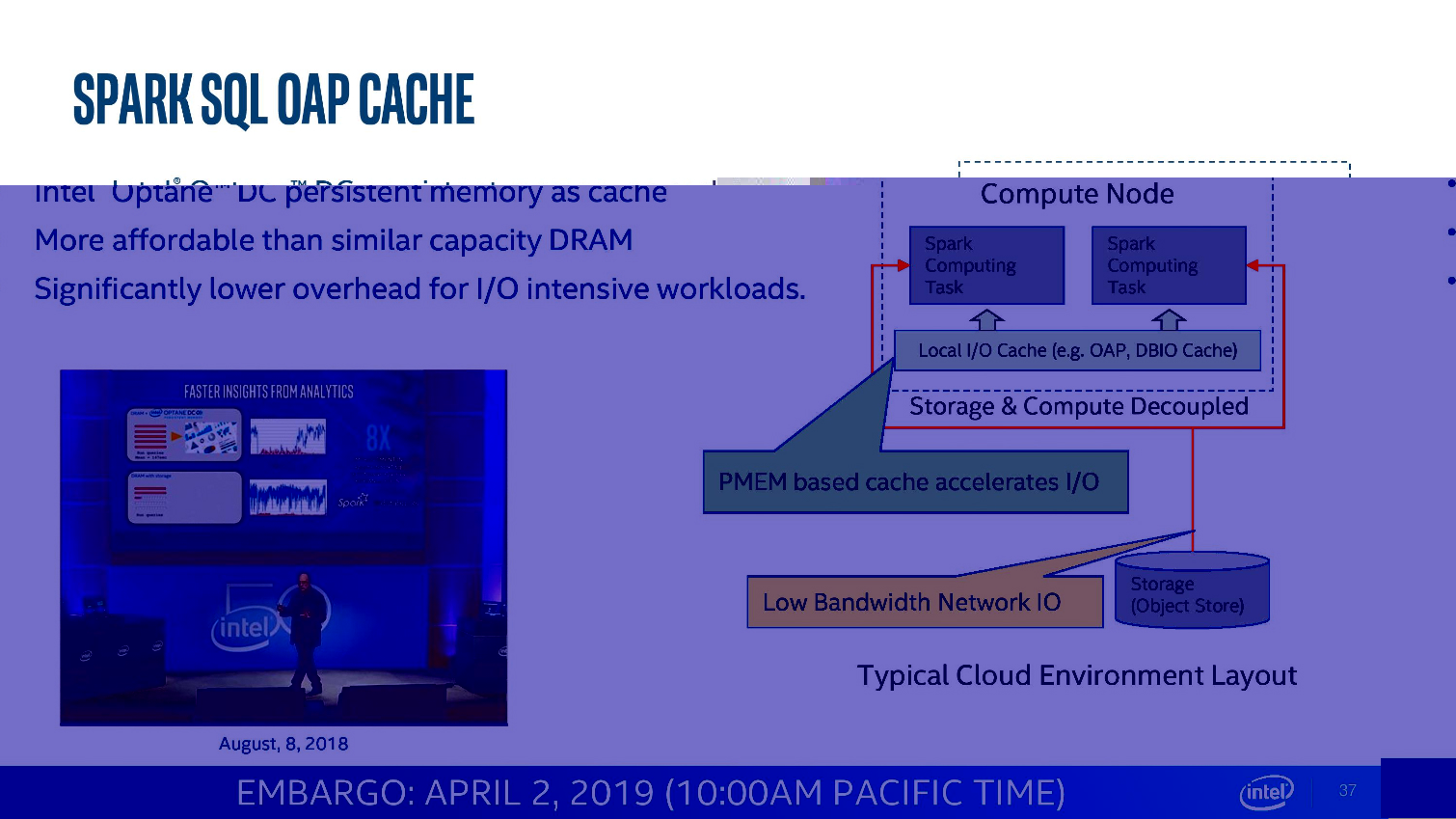


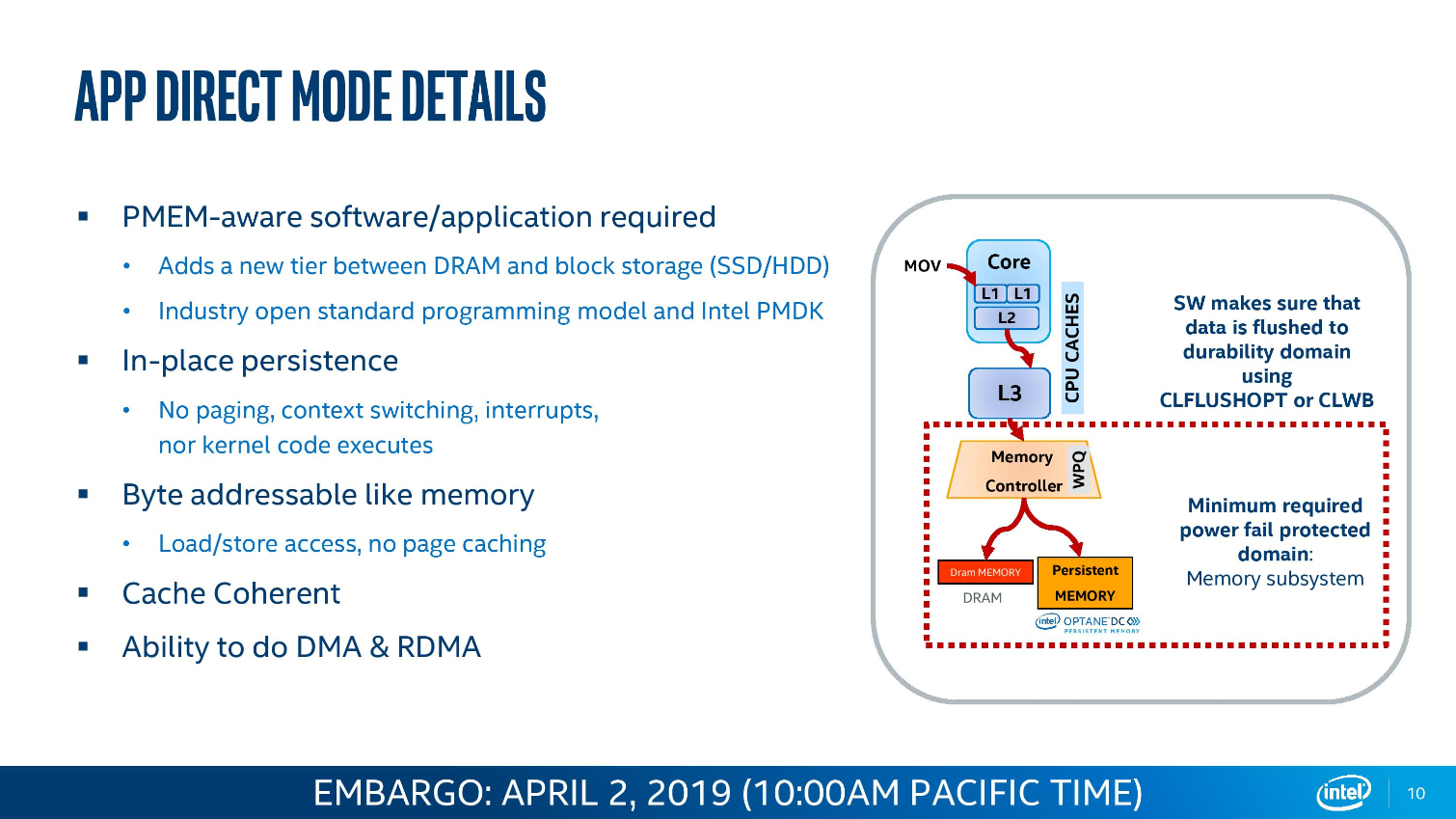
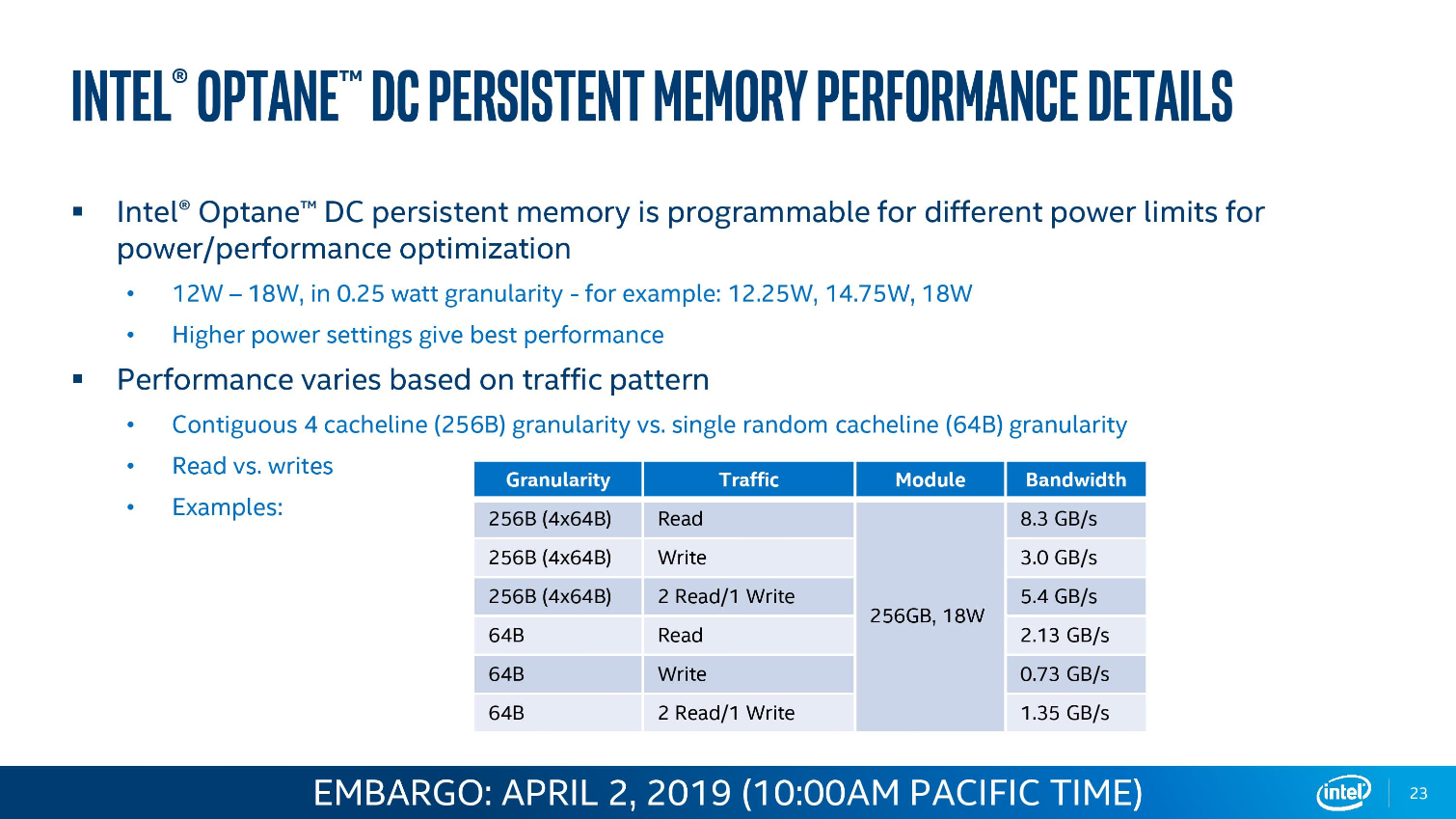









The DIMMs feature a controller, much like an SSD, that manages an abstraction layer. The DIMMs do consume more power than standard DRAM, so thermal throttling can become a concern in dense servers. To circumvent the issue, Intel offers a range of settings that span from 12W to 18W, at a quarter-watt granularity, to tune performance and thermal generation to the environment. Overall, the DIMMs consume about 3X the power of a standard 8/16GB DDR4 DIMM. Power consumption is a huge consideration in the data center, and gaining 32x the memory capacity in exchange for a 3x increase in power consumption is a dramatic improvement.
Intel designed a new memory controller to support the DIMMs. The DIMMs are physically and electrically compatible with the JEDEC standard DIMM slot but use an Intel-proprietary protocol to deal with the uneven latency that stems from writing data to persistent memory. Intel confirmed that the Optane DIMMs could share a memory channel with normal DIMM slots, but the host system requires at least a single stick of DRAM to operate.
The new class of memory requires new programming models to unleash the full performance benefit, and application performance varies based upon workload. Intel has worked diligently to promote the ecosystem, and we're working of a full review of the Optane DC Persistent Memory DIMMs. Stay tuned for deep-dive details.
Get Tom's Hardware's best news and in-depth reviews, straight to your inbox.
Current page: Optane DIMMs Have Bright Prospects
Prev Page Cascade Lake Xeon Platinum, Gold and Silver Next Page Xeon D-1600, New SSDs, and 100Gb Ethernet
Paul Alcorn is the Editor-in-Chief for Tom's Hardware US. He also writes news and reviews on CPUs, storage, and enterprise hardware.

